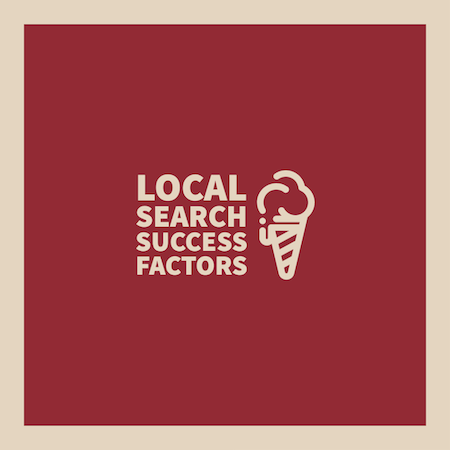Your cart is currently empty!

Local Search Success Factors
Local search kicks in when people look for goods or services in their area. Take ice cream for example. Most of the time when you search for “ice cream” you’re looking for a place nearby to purchase your favorite form of dairy. Sure, some may be looking for the history of ice cream, or how air content in ice cream affects texture, but most people just want to buy some ice cream.
The same is typically true when people search “doctors” or “primary care physicians”; most of these searches are to find healthcare providers in the area rather than general information about doctors. These decisions are part of Google’s strategies for determining search intent — what the searcher has in mind.
People who need a doctor typically start with searches for general information about the health problem they’re experiencing: symptoms, general descriptions of how they feel, etc. When they decide they’re ready to make an appointment with someone, they look for doctors and they want to see local doctors.
Google has gotten pretty good at identifying when you’re looking for goods or services in your local area. The factors that make you show up in local search aren’t exactly the same as the factors that determine your rankings in general search.
What’s the difference between local search and regular search?
When Google notices that you are looking for a local business — rather than general information — you see the “three pack” and a map.
Google’s local 3-pack is a list of three local establishments that Google deems most relevant to your search. These options appear as pins on a map usually with information such as ratings, a description, and hours of operation.

General informational search results look different. You might see a Google snippet, some paid ads, or a list of additional queries that are similar to your original search.
The things that determine rank in local search are different from the factors determining your website’s position in a general search.
Optimizing for local search
If you’re a general practitioner, the owner of an ice cream parlor, or you own a business that relies on local clientele, you need to perform well in local search.
Your competitors, your location, and the quality of your website have the largest influence on whether you show up in the 3-pack. However, other factors can make a difference, as well:
- The searchers’ location. Since the Pigeon update back in 2014, Google shows people services and businesses nearest to the search location.
- The location of your business. If your practice is close to the searcher, you’re more likely to show up. On the other hand, if they’re closer to your competitor, your competitor will generally be shown ahead of you.
- Local stature. The reputation of your business, its reviews, and the length of time you’ve been around will affect your local search rankings.
- Local citations. Mentions of you, your practice, or your business — with or without links — affect your local rankings.
- Your website’s rank for the keywords being used.
Some factors aren’t within your control
You can’t control what your competitors do. You can’t control who uses search engines, the keywords that they use (people will search for heart doctors even if that’s not what cardiologists are called), or the geographical location of those users. And while you do have control over your physical location, it’s not something that can or should change often.
There’s a lot that you can do to improve local search ranking, however.
You can improve your local stature, local citations, and the quality of your website. You can make sure that your listed information — address, phone number, etc. — are accurate.
Improving your rankings though SEO best practices is another way to bolster local search. Search engine optimization is absolutely essential for businesses that want to perform well in local search and general search. Let Haden Interactive help you with SEO services.
by
Tags:

Leave a Reply